
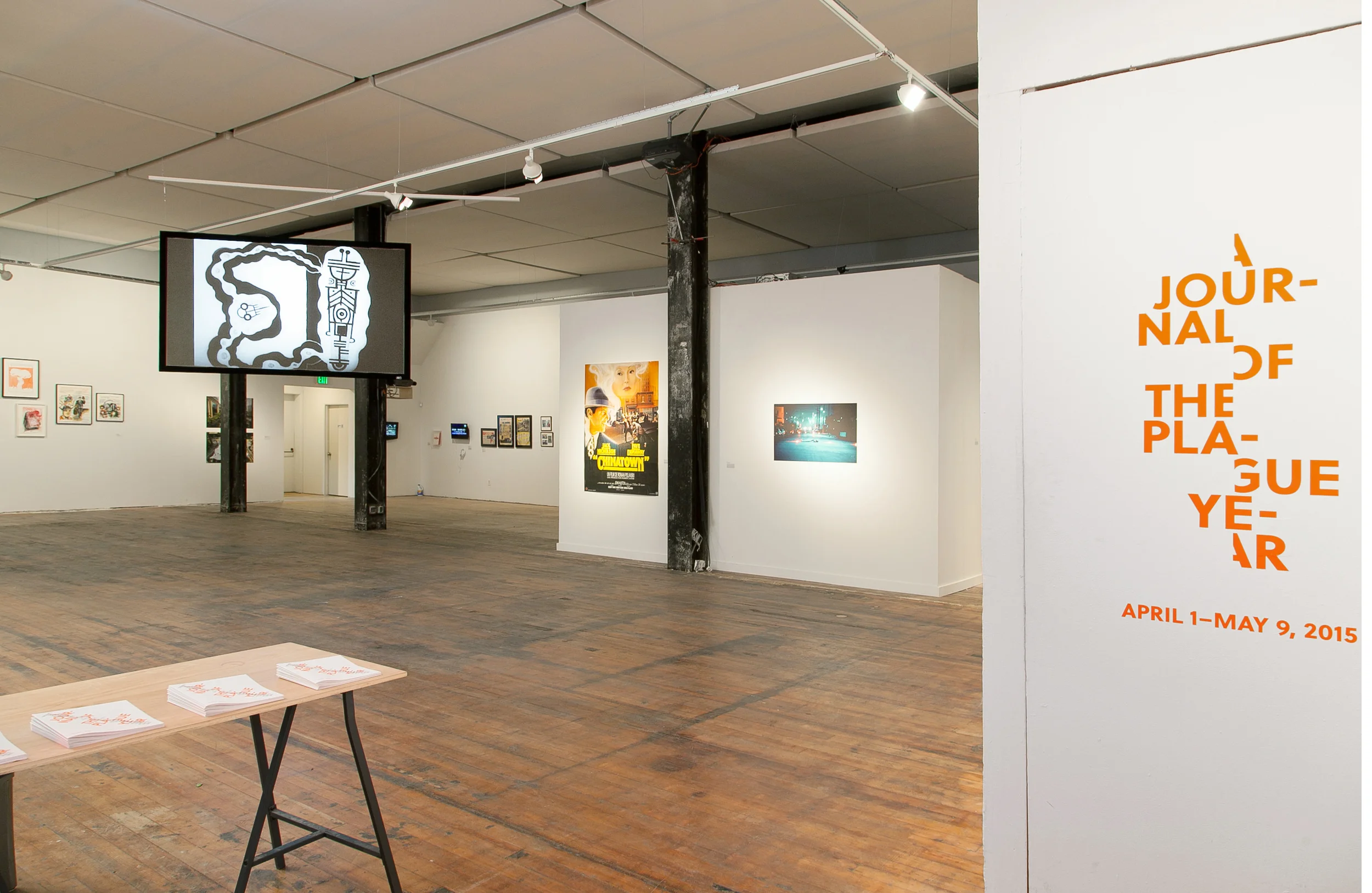
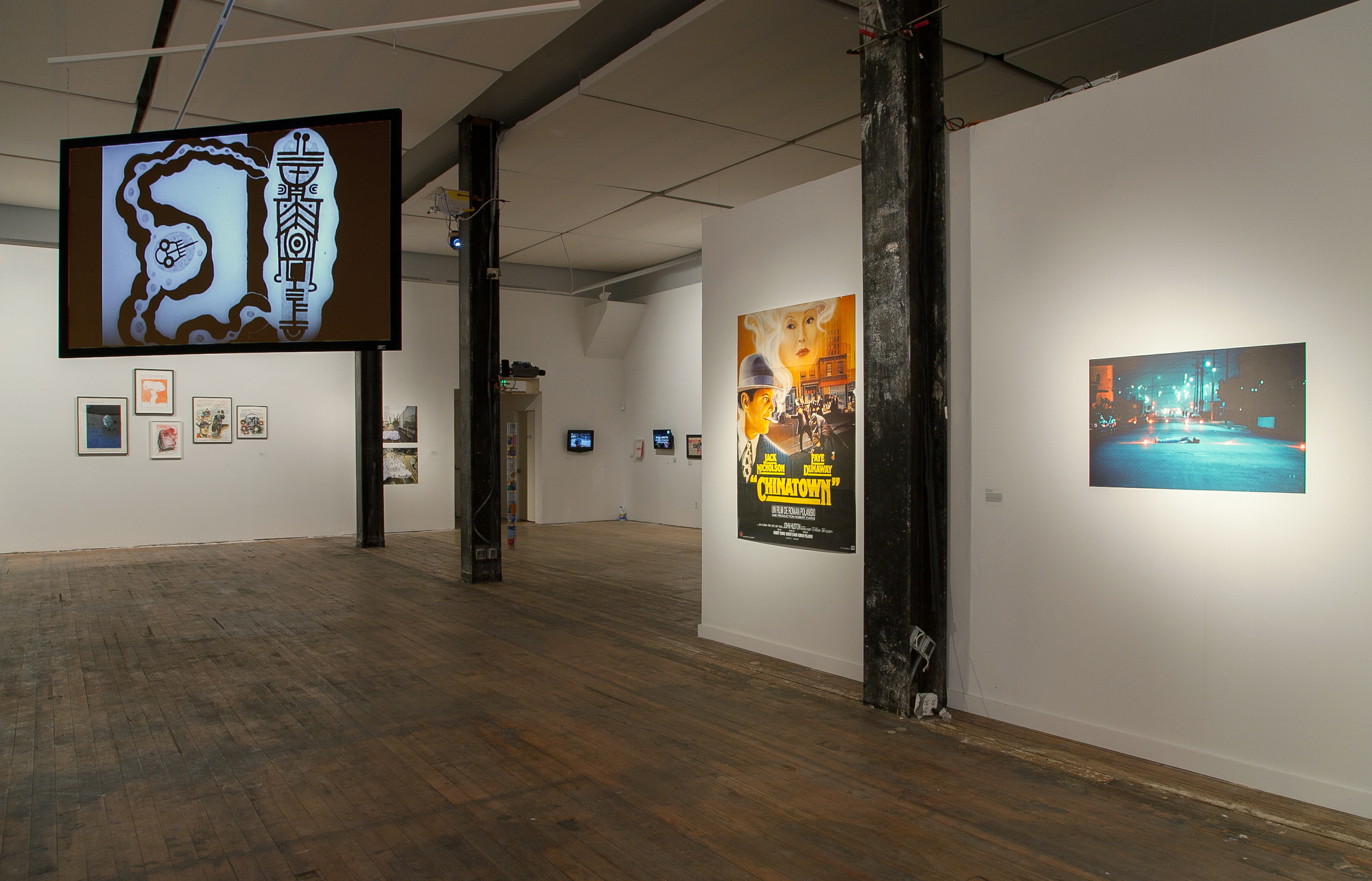
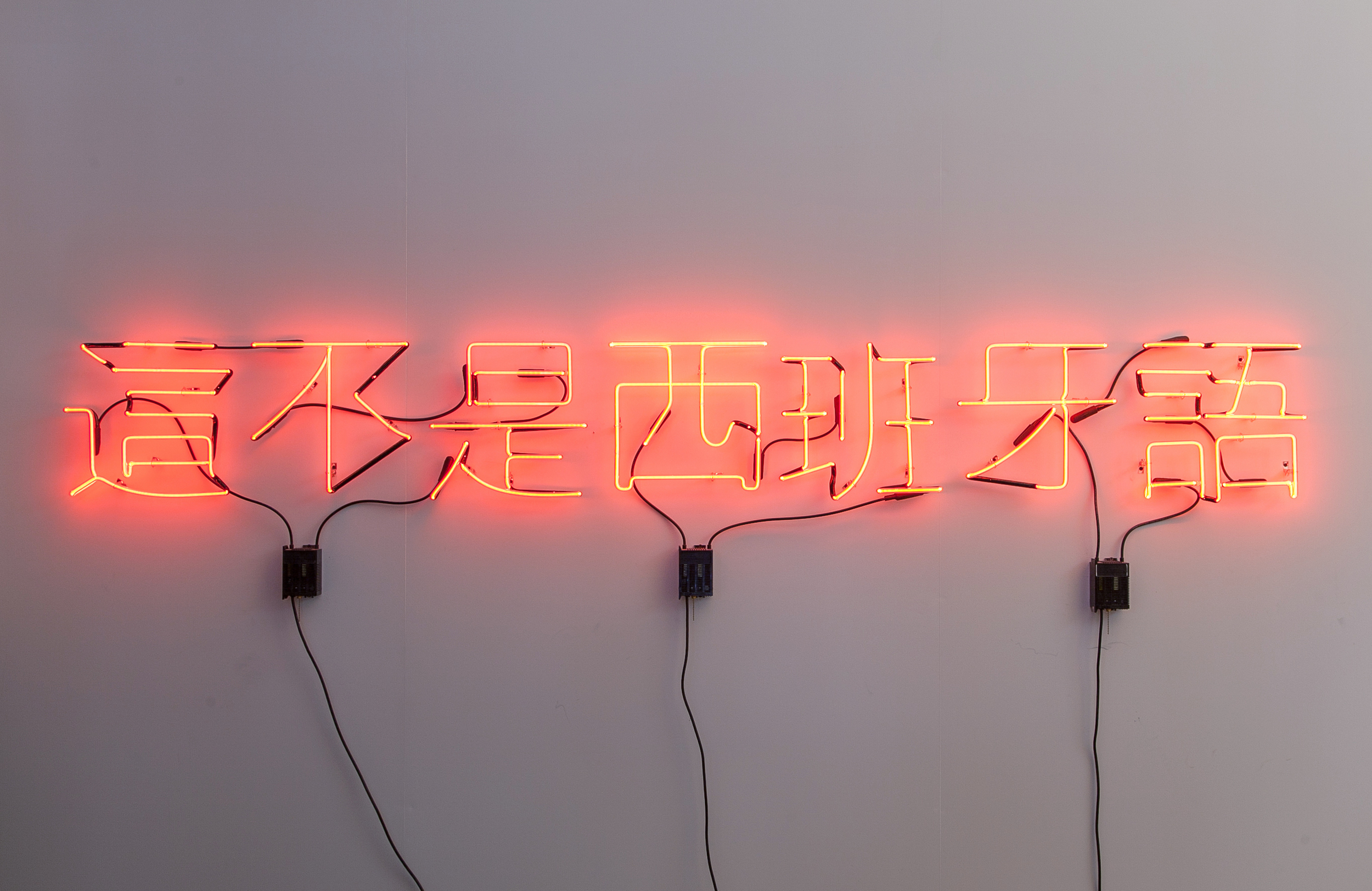

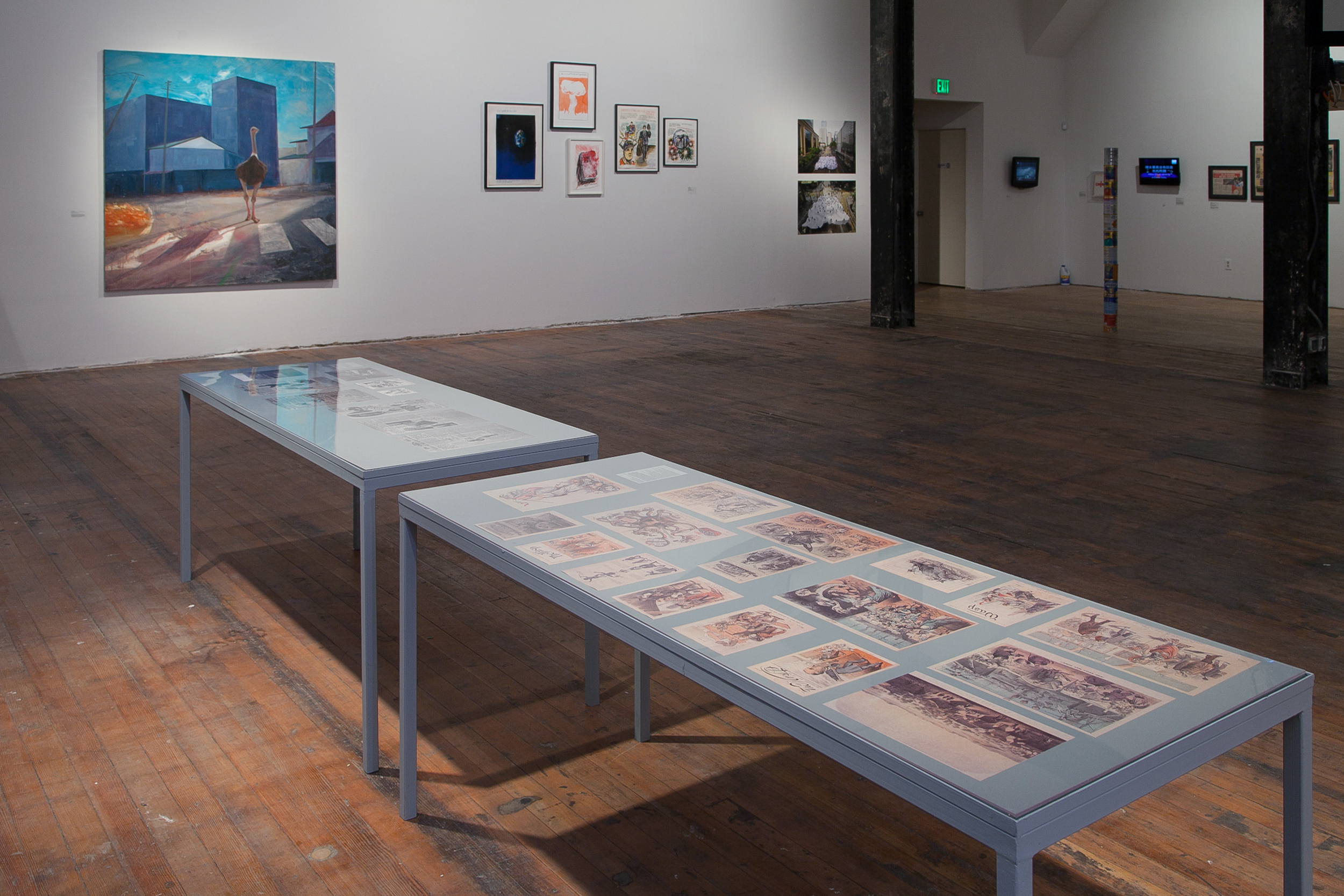
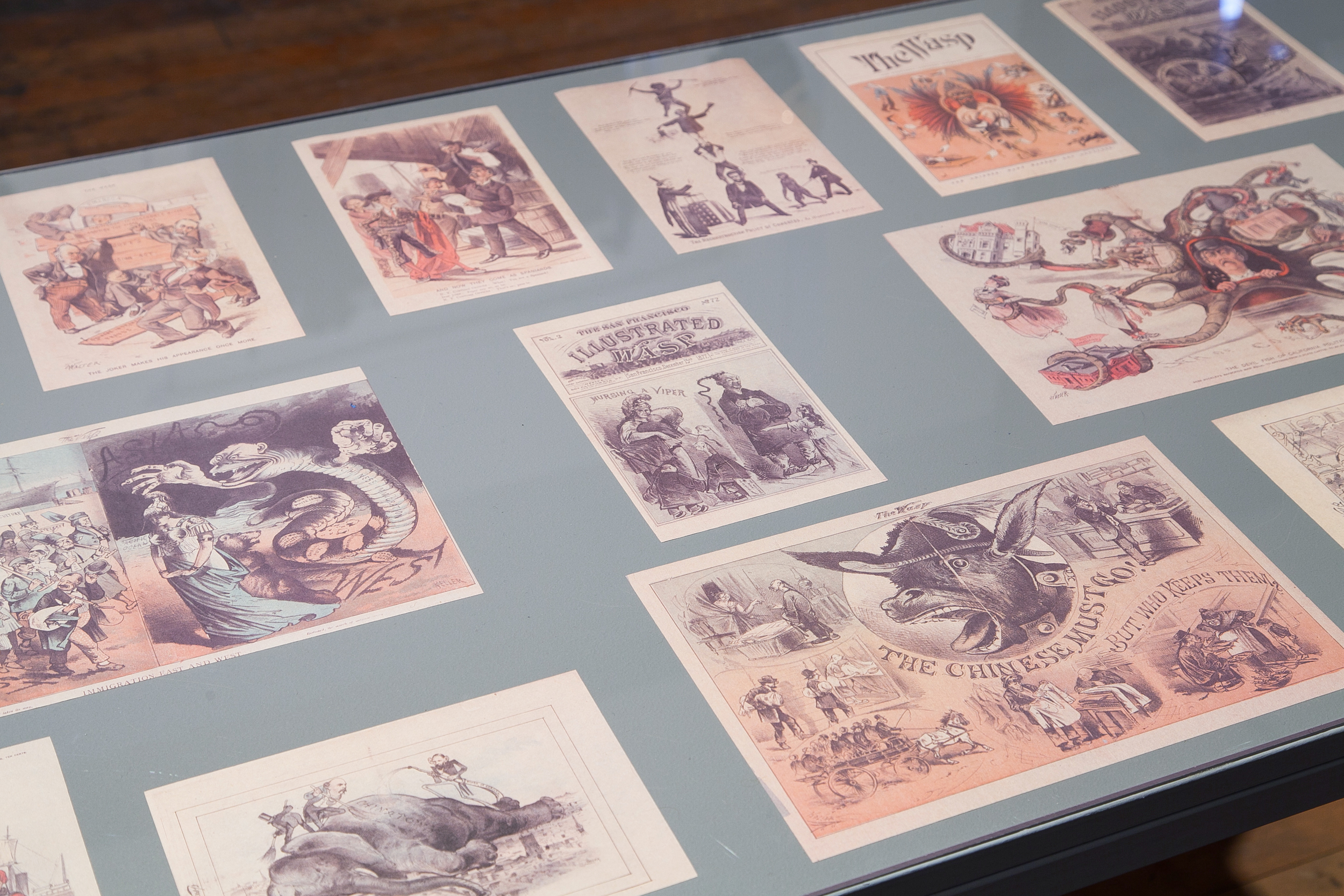
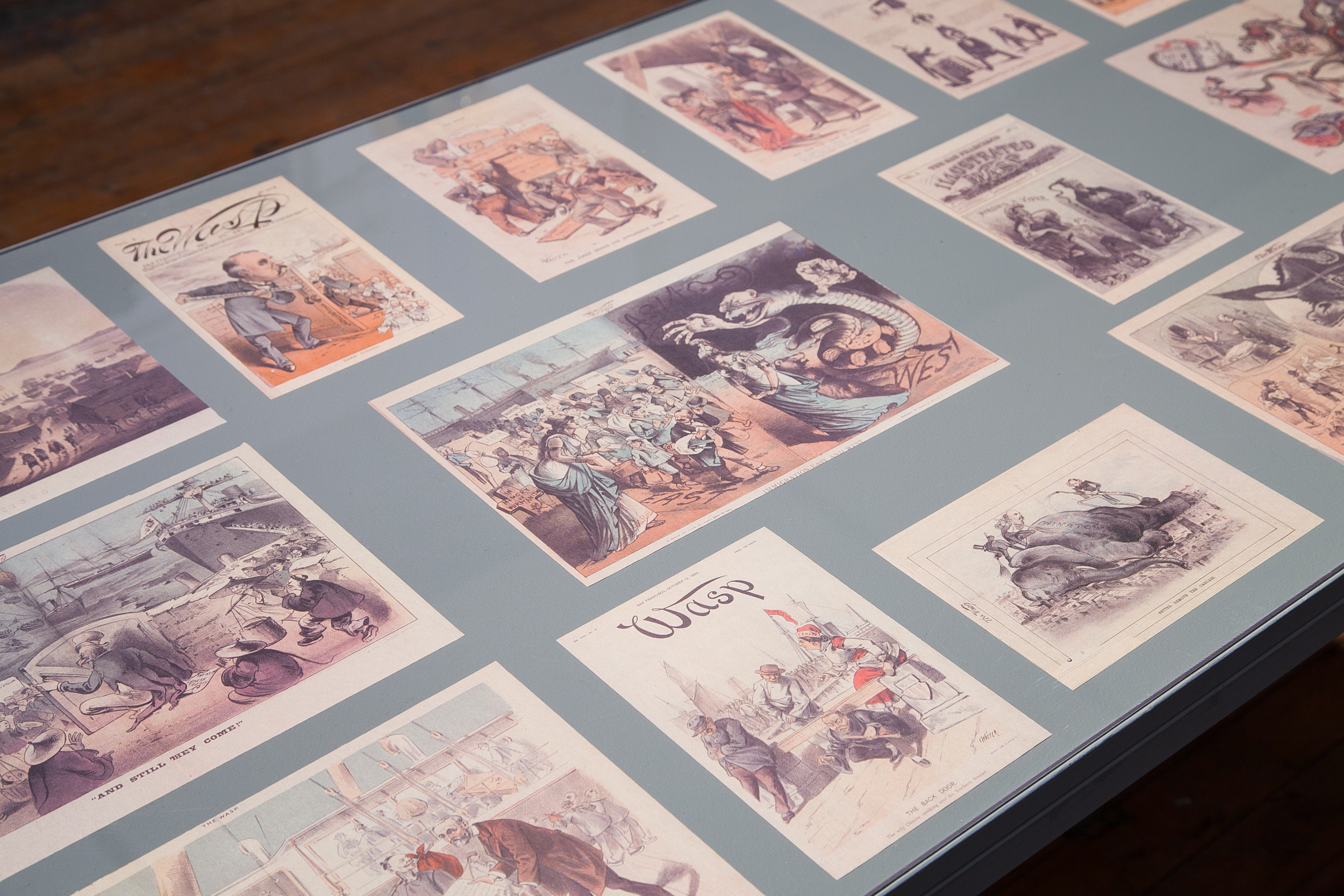
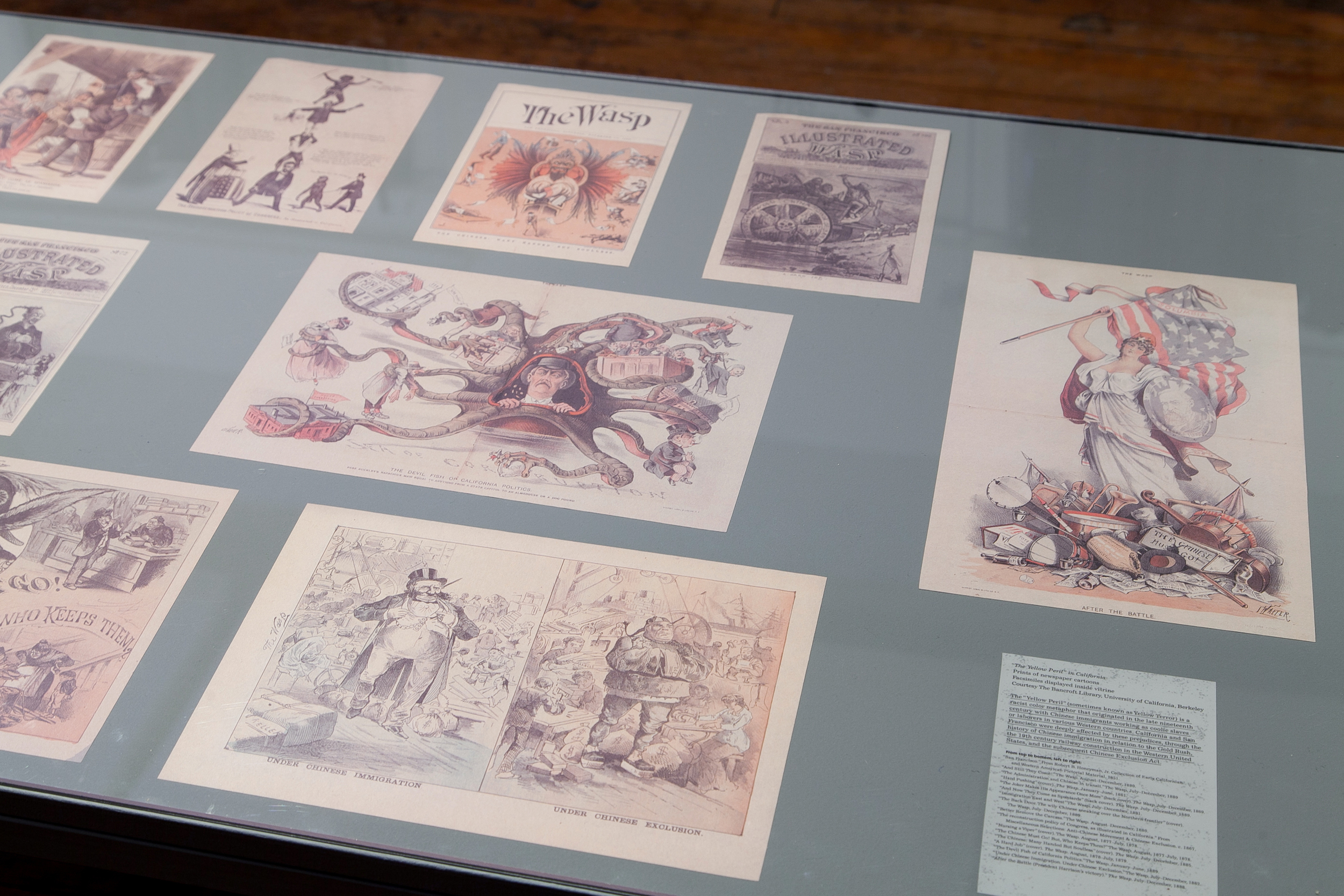
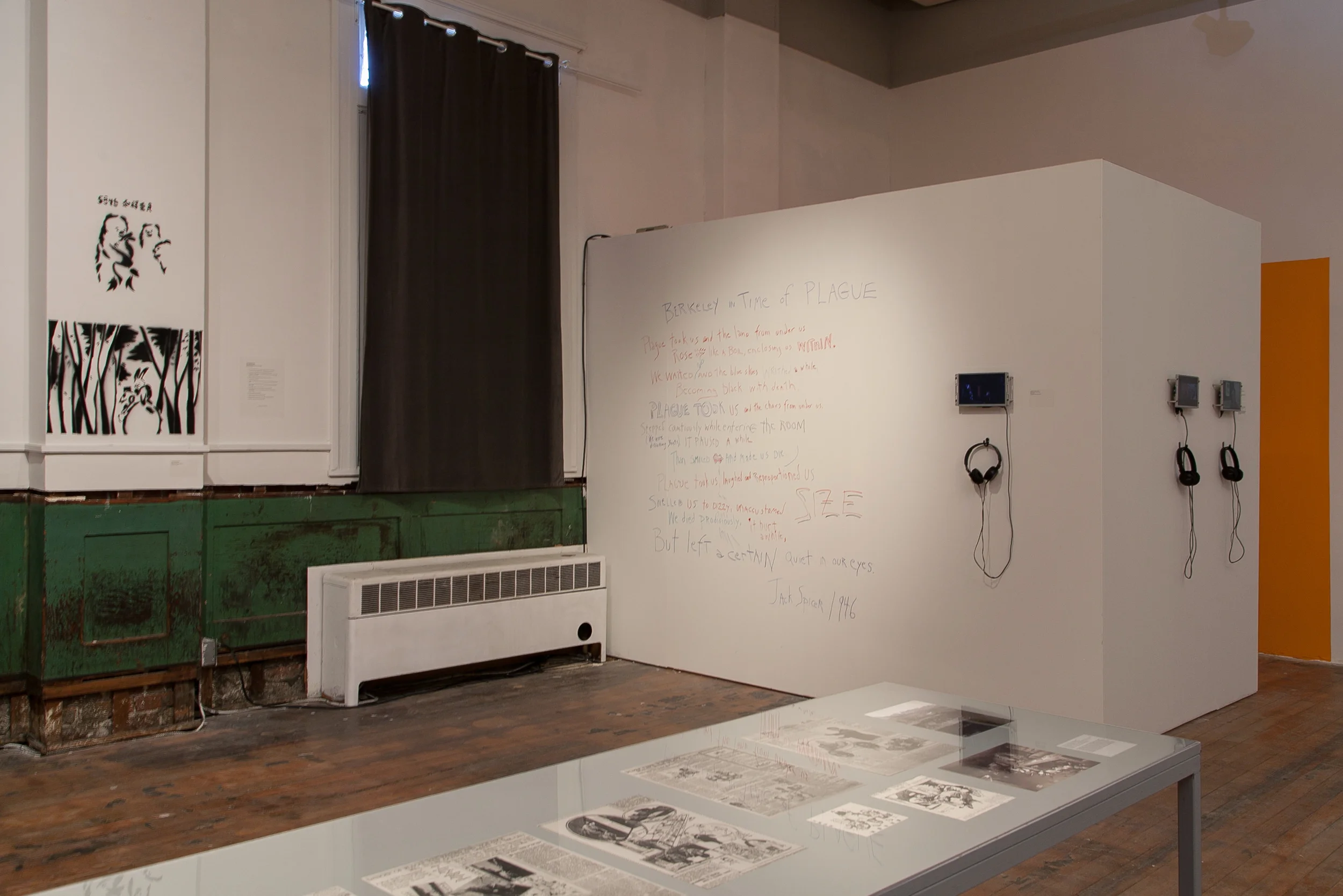


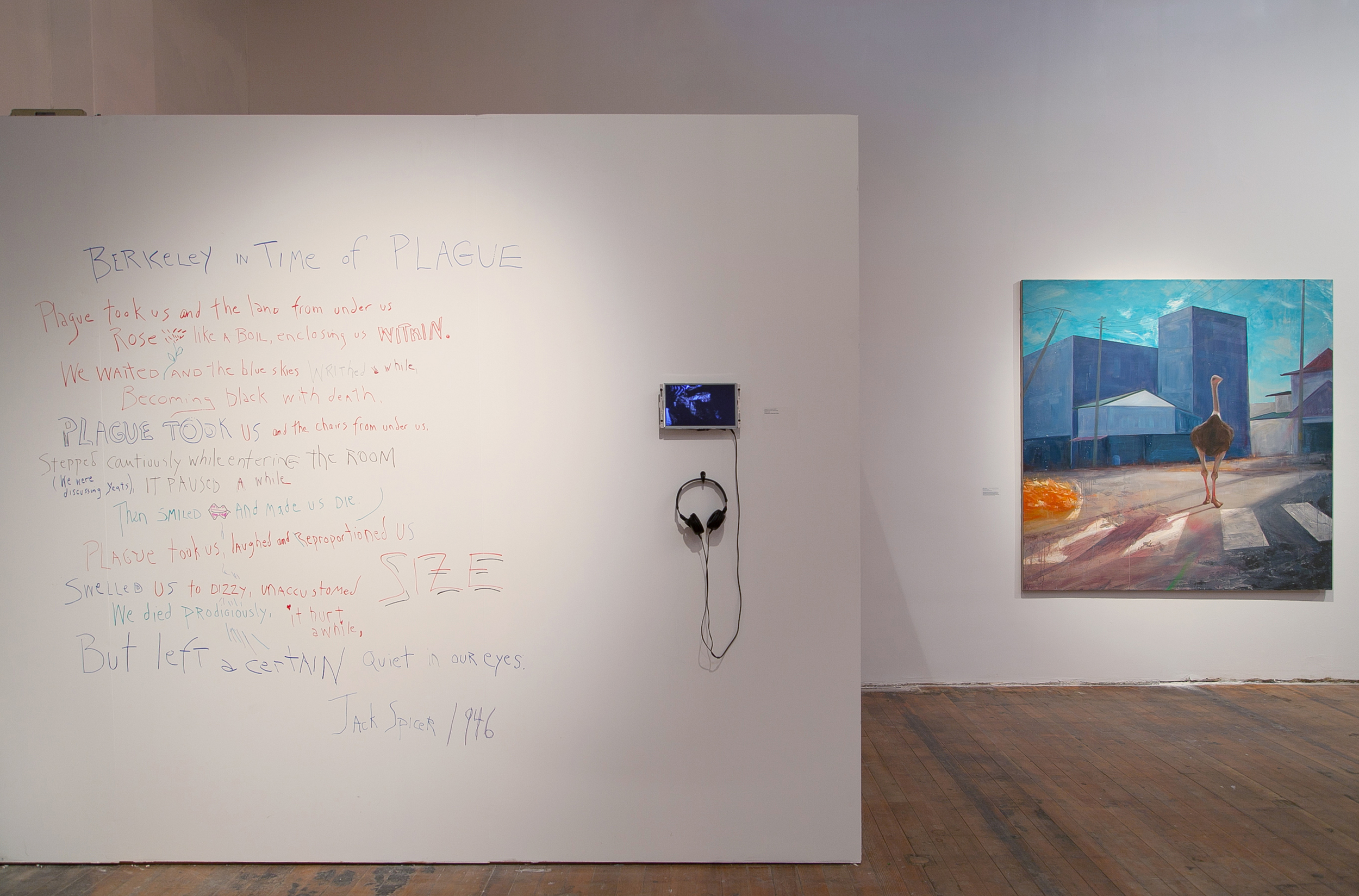
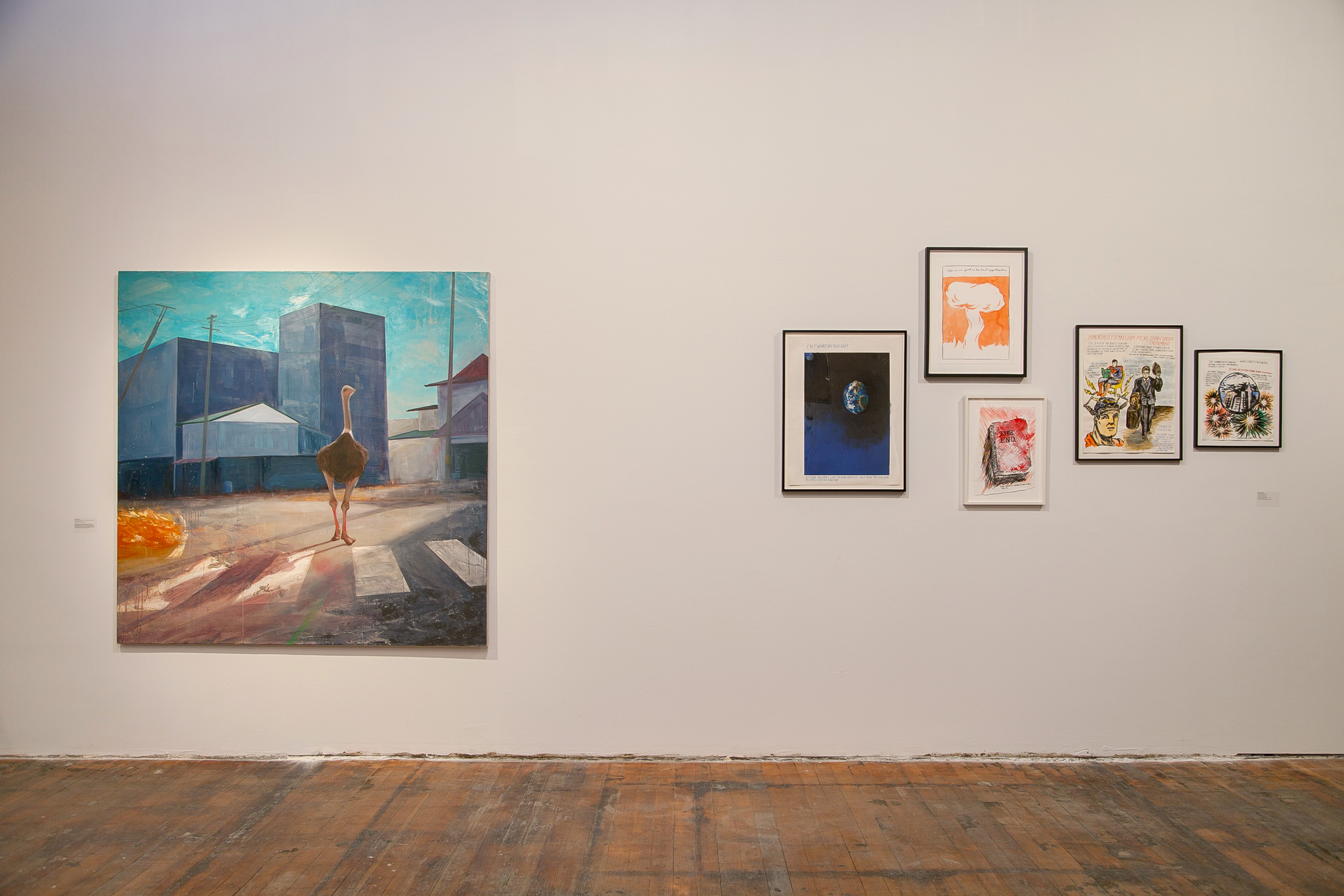
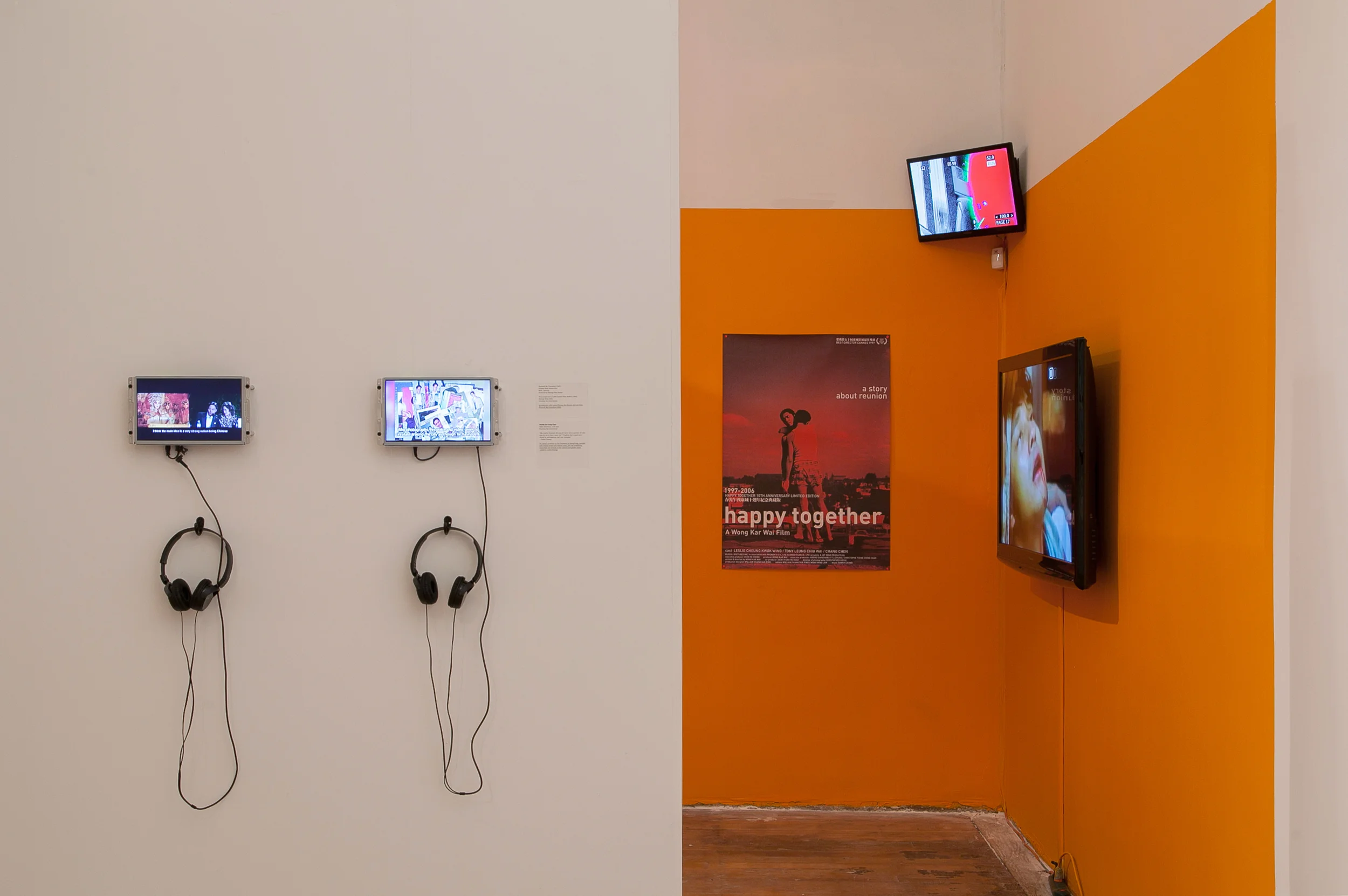

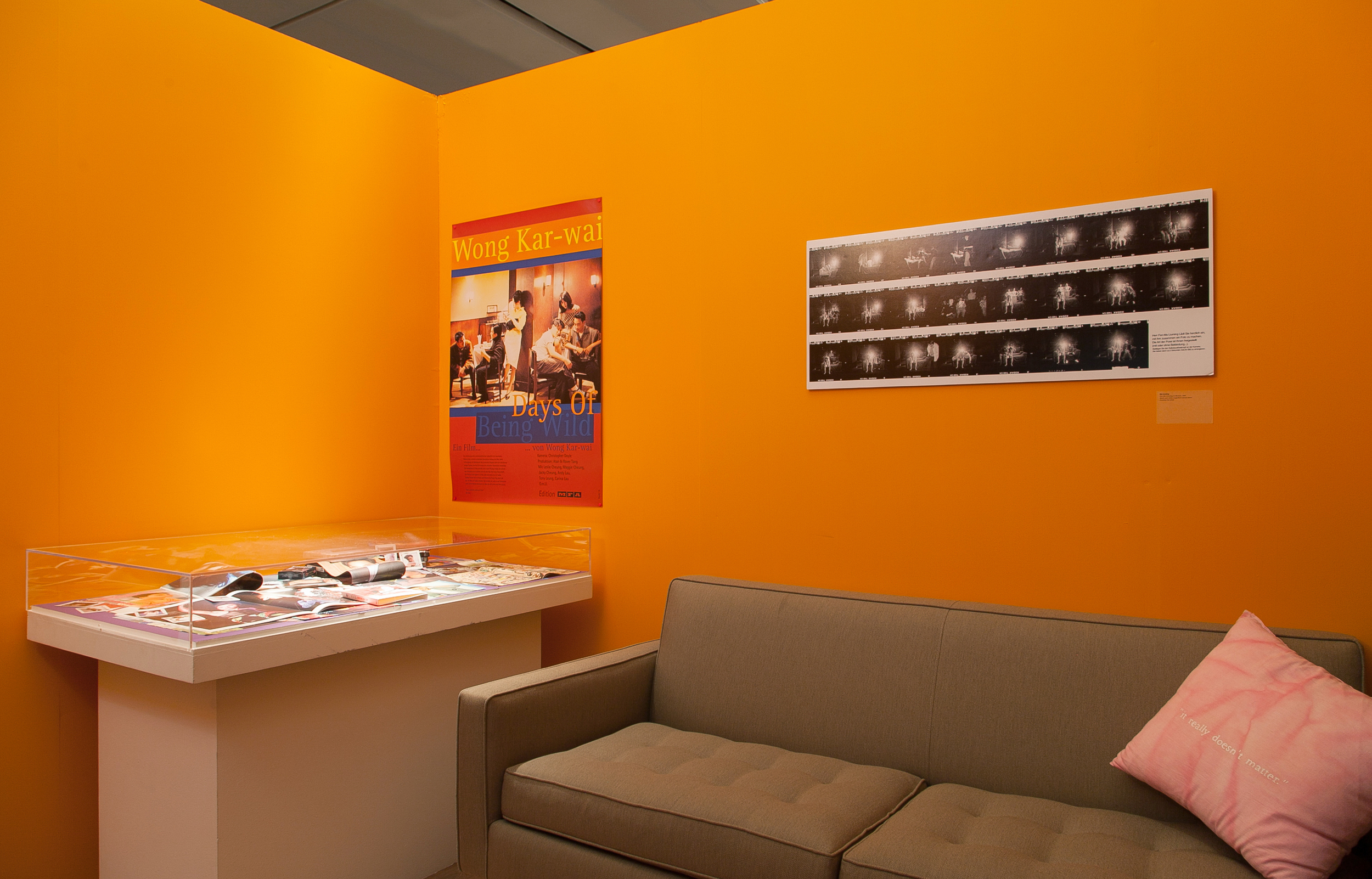
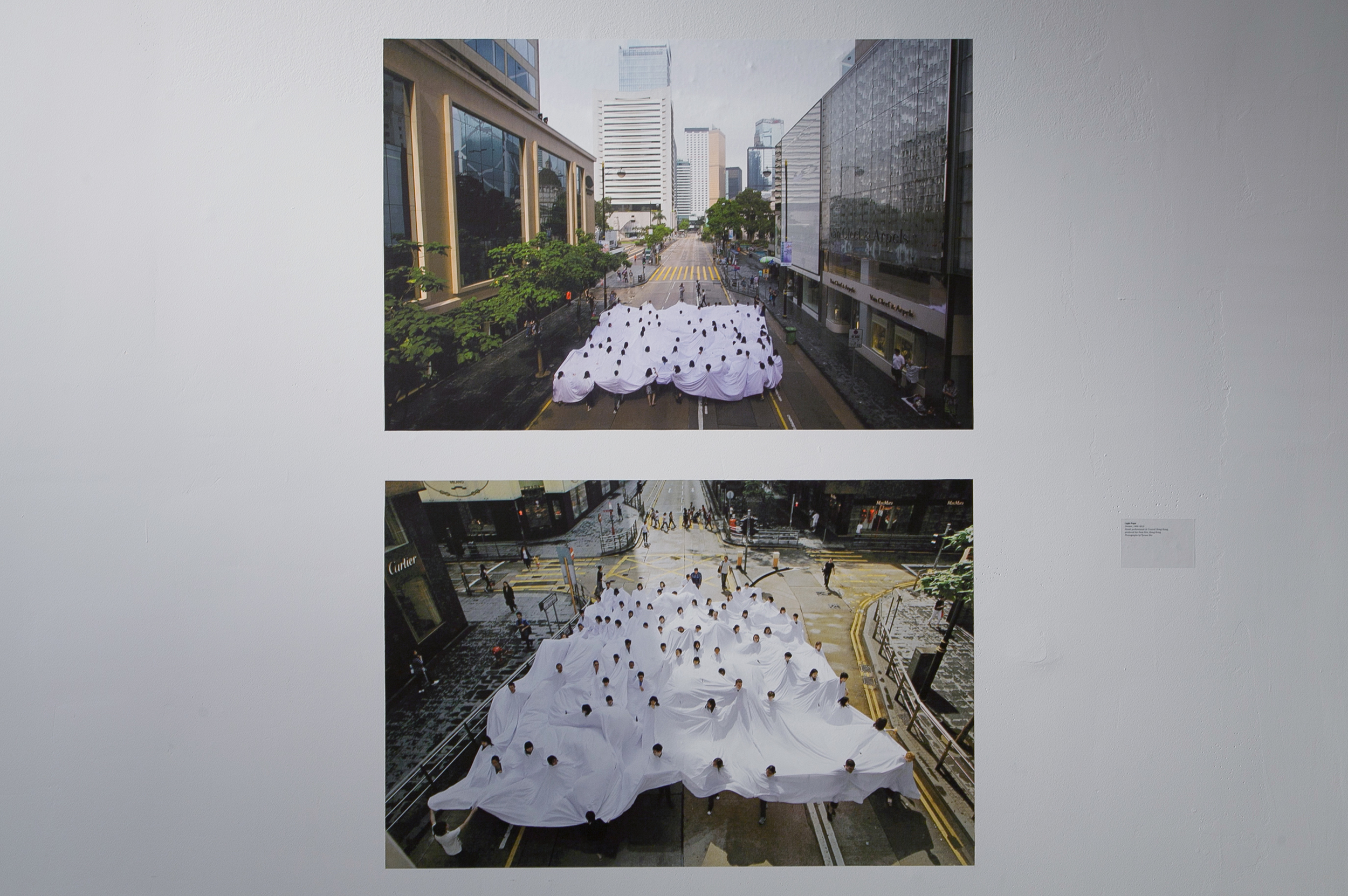
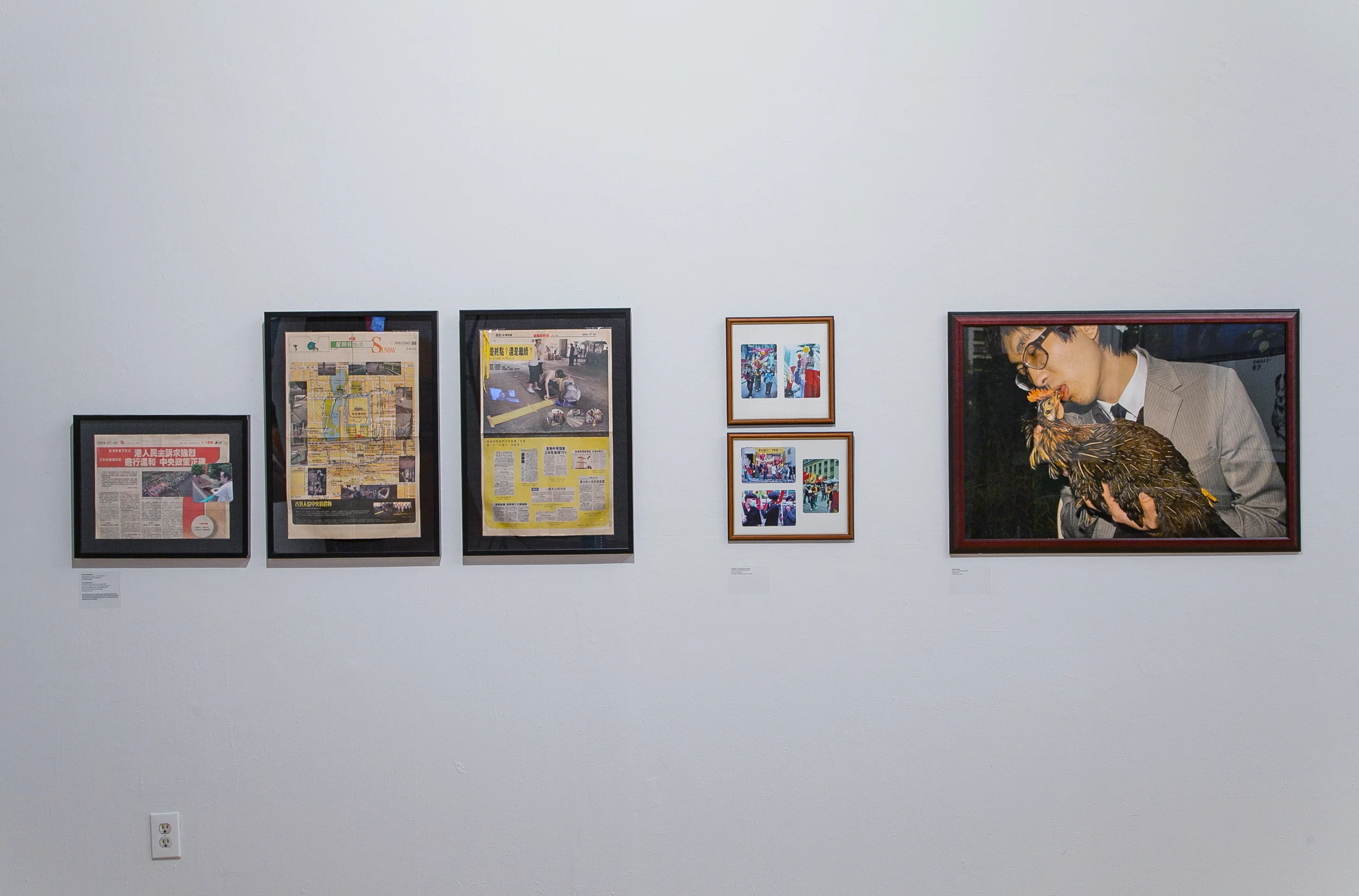
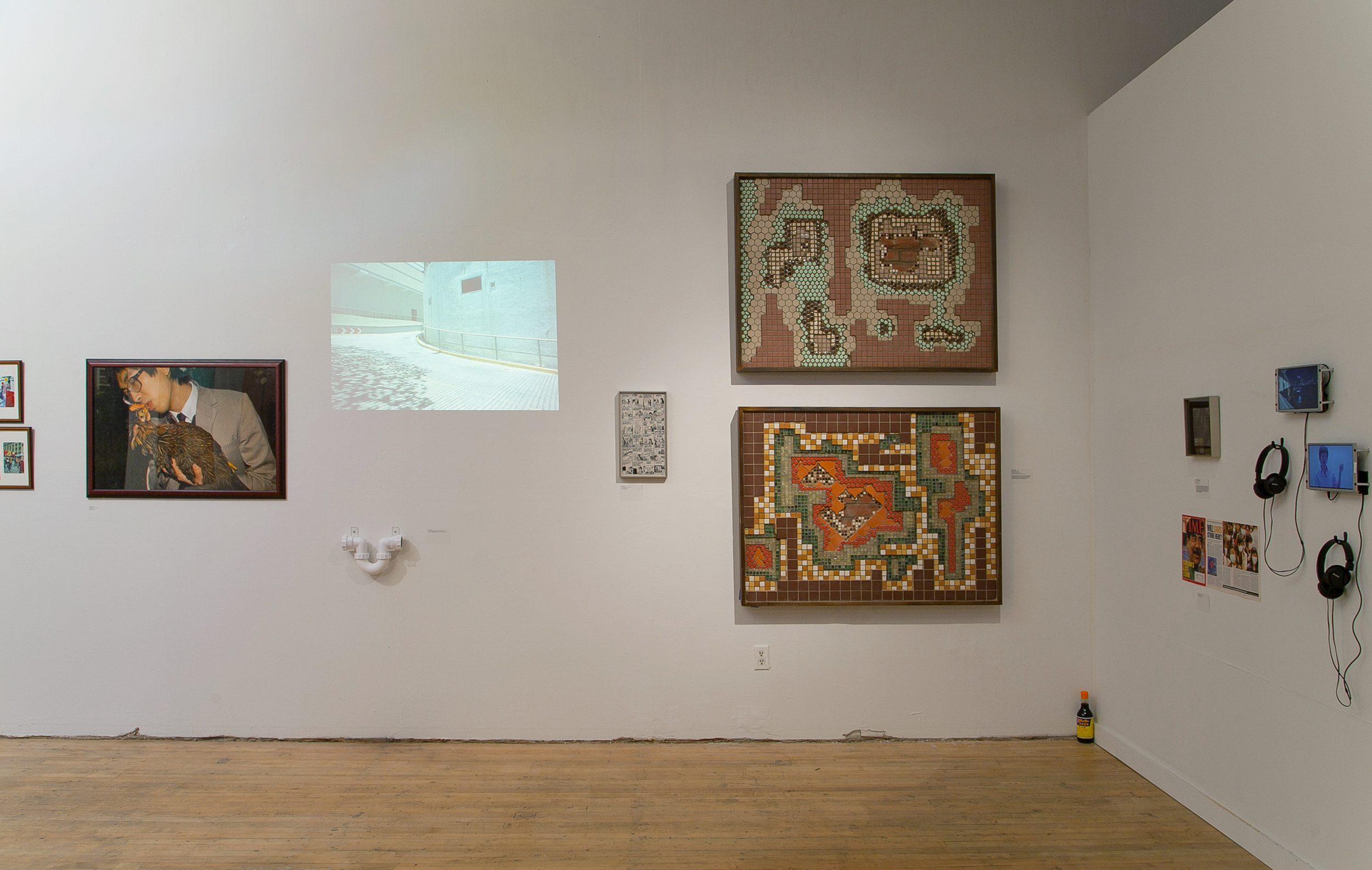
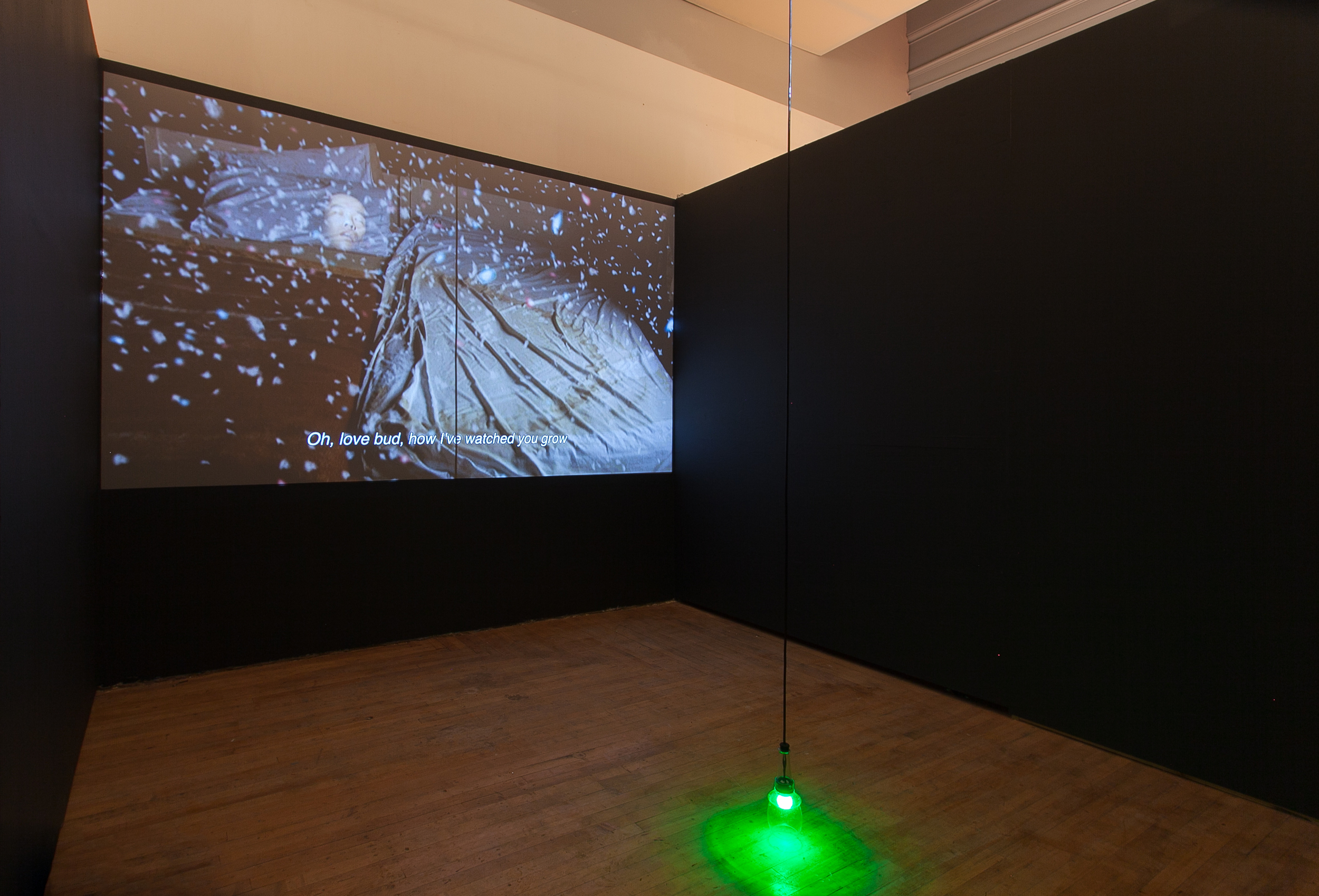


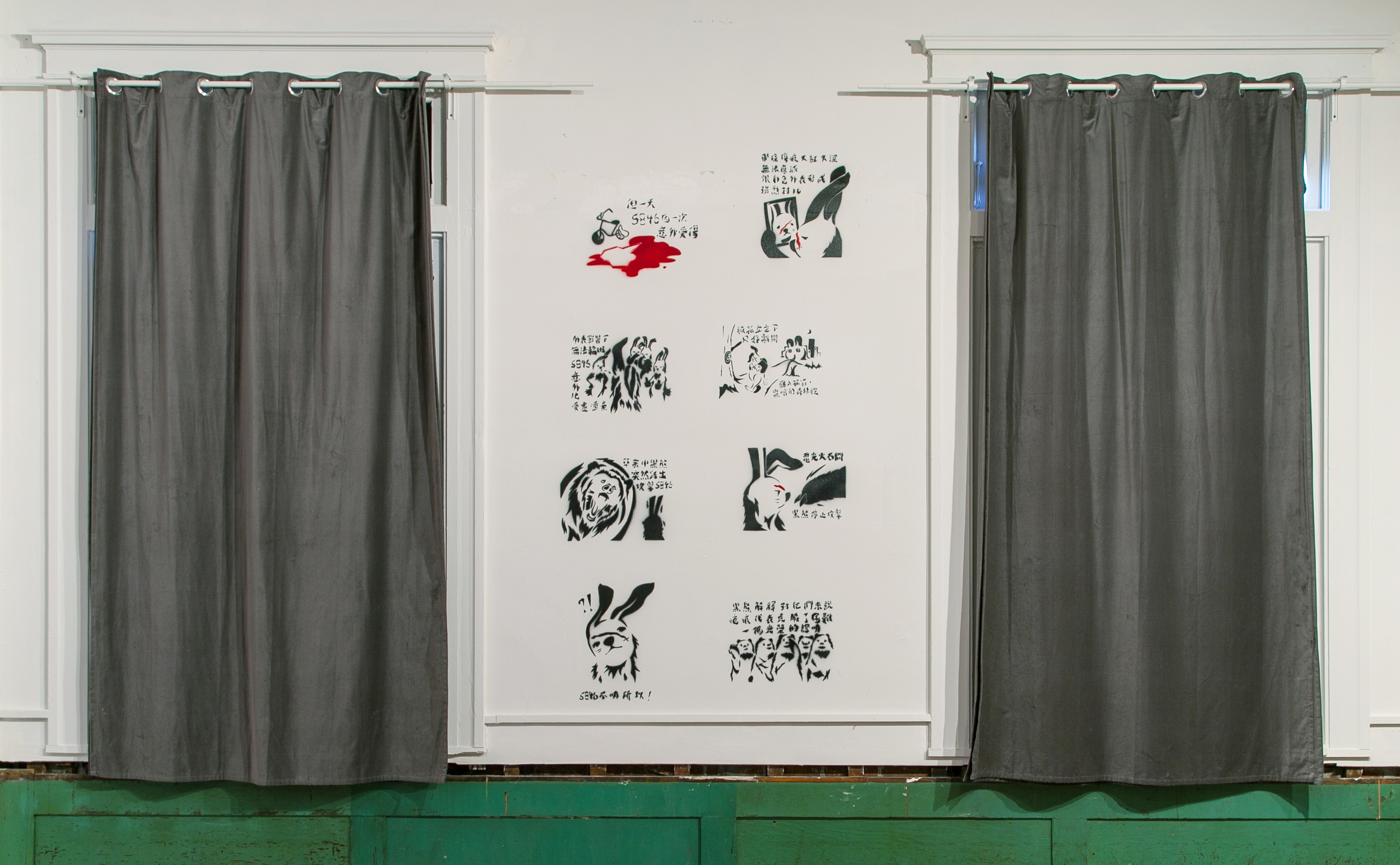
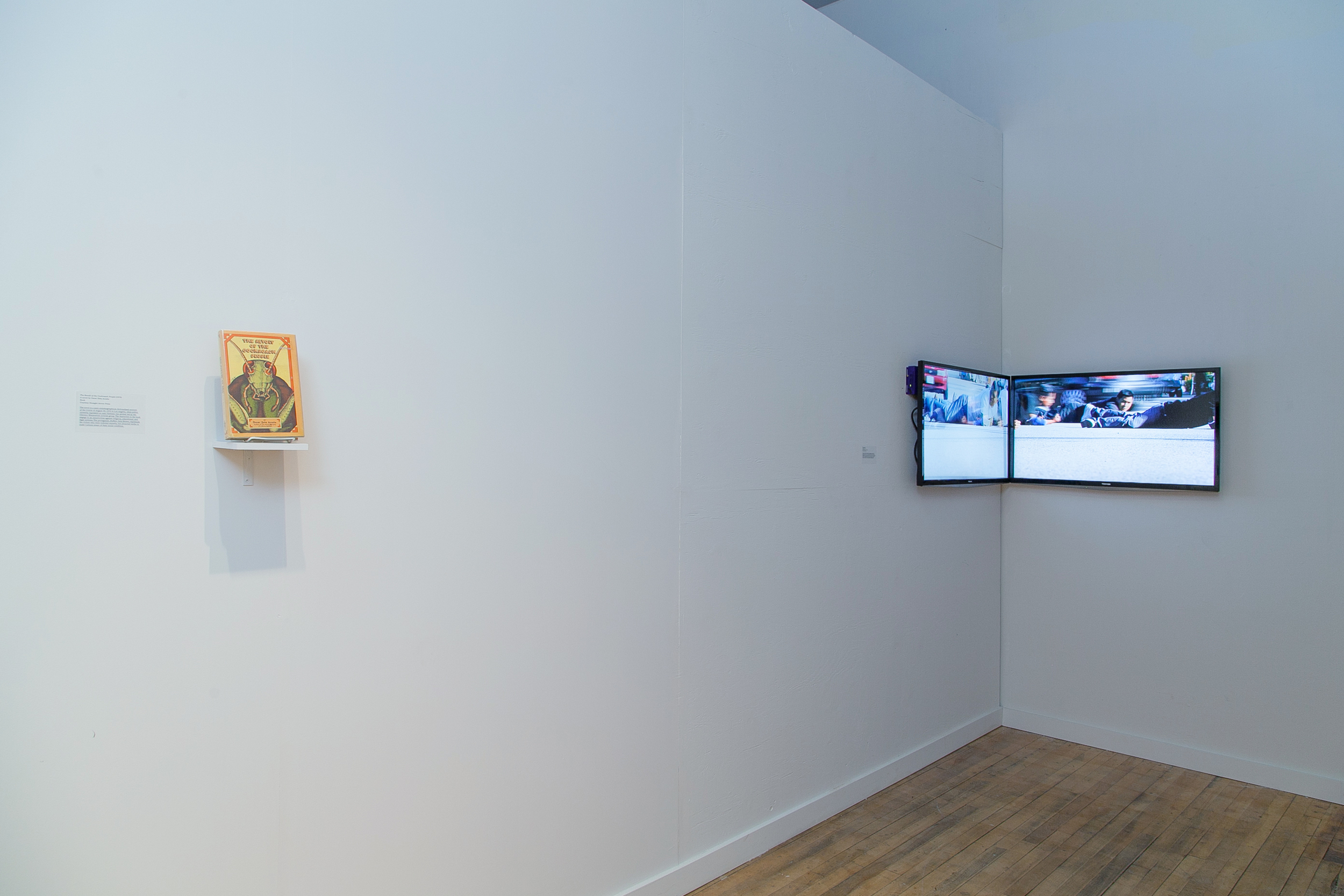


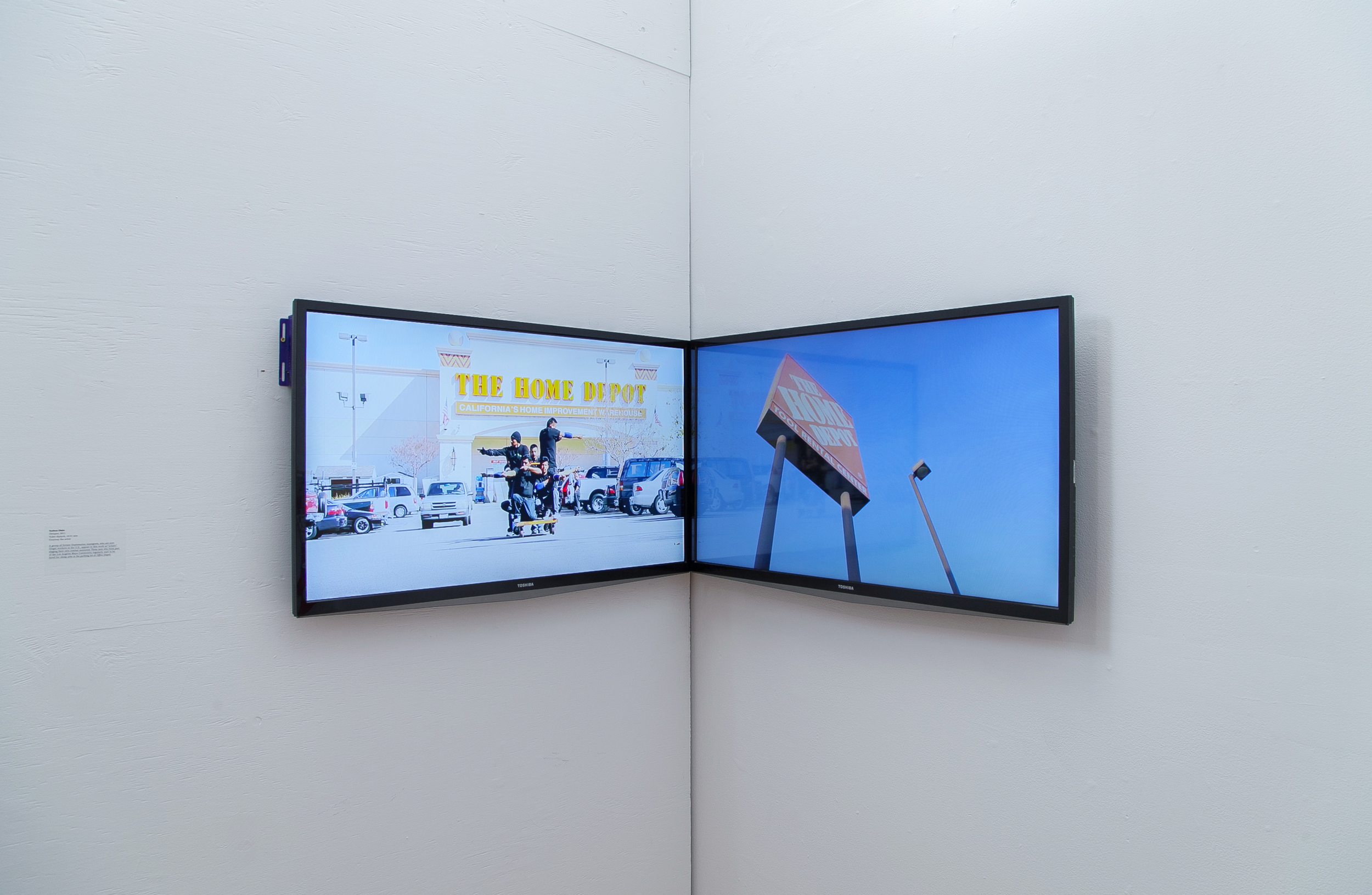
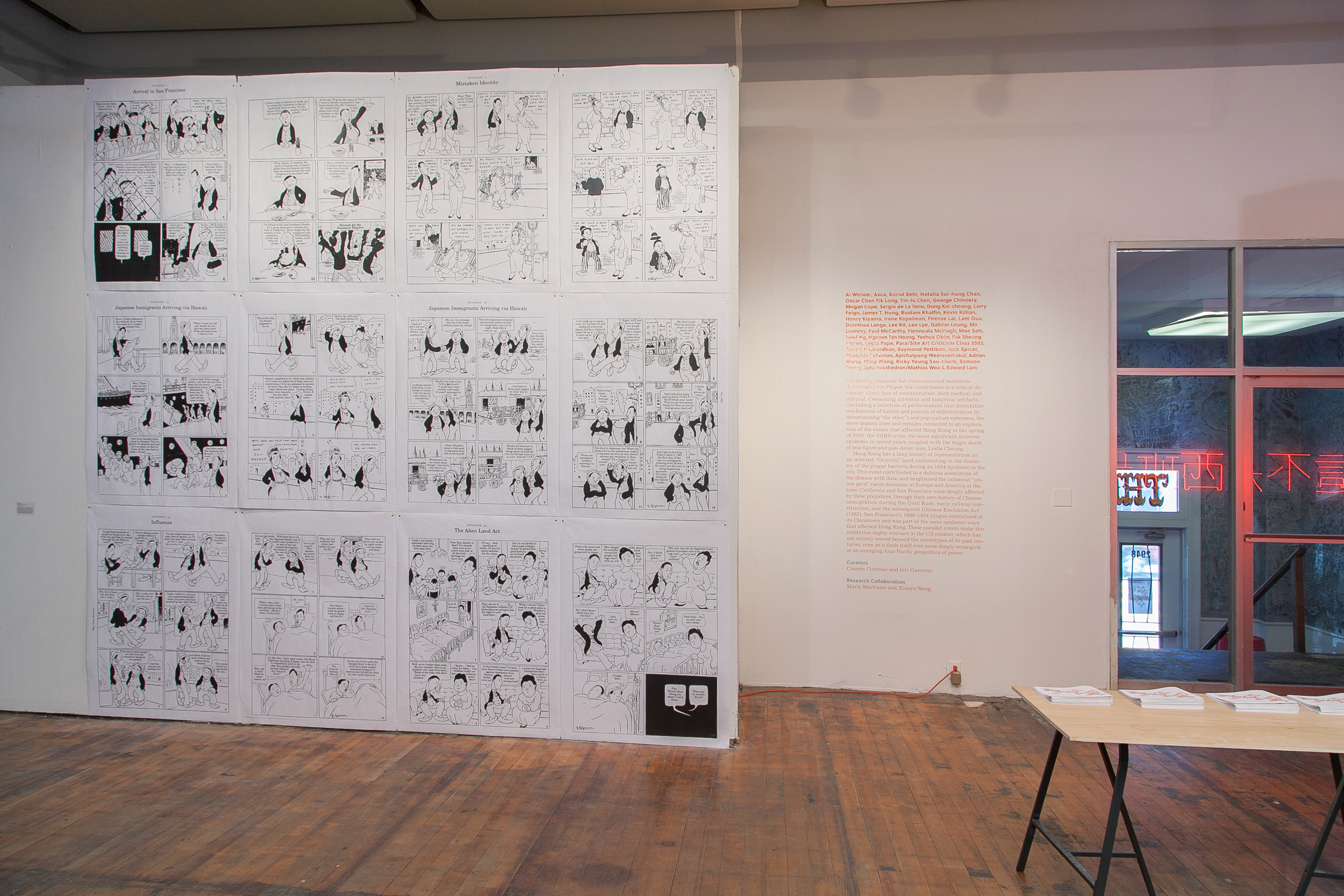
Opening: Wednesday, April 1, 6–7:30pm at Kadist SF, 7:30–9pm at The Lab
Exhibition Dates: April 1–May 9, 2015
Gallery Hours: Wednesday–Saturday, 2–7pm
This is two-venue exhibition, co-presented at:
The Lab, 2948 16th Street, San Francisco, CA 94103 and
Kadist Art Foundation, 3295 20th Street, San Francisco, CA 94110
Installation images by Jeff Warrin
Artists: Ai Weiwei, Asco, Bernd Behr, Natalia Sui-hung Chan, Oscar Chan Yik Long, Yin-Ju Chen, George Chinnery, Megan Cope, Sergio de La Torre, Dung Kai-cheung, Larry Feign, James T. Hong, Rustam Khalfin, Henry Kiyama, Irene Kopelman, Firenze Lai, Lam Qua, Dorothea Lange, Lee Kit, Len Lye, Gabriel Leung, Ma Liuming, Paul McCarthy, Fionnuala McHugh, Moe Satt, Josef Ng, Nguyen Tan Hoang, Yoshua Okón, Pak Sheung Chuen, Lygia Pape, Para/Site Art Criticism Class 2003, Anand Patwardhan, Raymond Pettibon, Jack Spicer / Kevin Killian, Shooshie Sulaiman, Apichatpong Weerasethakul, Adrian Wong, Ming Wong, Ricky Yeung Sau-churk, Samson Young, Zuni Icosahedron/Mathias Woo & Edward Lam
A Journal of the Plague Year was first shown at Para Site, Hong Kong during the summer of 2013. Conceived as a touring exhibition, its center of gravity shifts under the influence of magnetic forces in each location on its itinerary. Nevertheless, each iteration departs from and remains strongly connected to an exploration of the events that affected Hong Kong in the spring of 2003: the most significant airborne epidemic in recent years–the SARS crisis–coupled with the tragic death of pop figure and pan-Asian icon Leslie Cheung.
Stemming from its colonial past, Hong Kong has internalized a history of epidemics and representation as an infected land waiting to be conquered from nature, disease, and oriental habits in order to be made healthy, modern, and profitable. Culminating in the discovery of the bacteria causing the plague during an 1894 epidemic in Hong Kong, these narratives contributed to a dubious association of the disease with Asia, and heightened the infamous "yellow peril" racist discourse in Europe and America at the time. For example, San Francisco’s plague epidemic of 1900-1904 was centralized in its Chinatown, and was part of the same epidemic wave that affected Hong Kong. These facts, together with the virulent racism in California at the time, further intensified the association between disease and Asian populations.
Departing from these events, A Journal of the Plague Year navigates disparate but interconnected narratives in order to contribute to a critical discussion about recent history, the implications of which extend beyond Hong Kong and beyond the realm of medicine. Through the contributions of artists, shown alongside historical artifacts and pop-culture ephemera, the exhibition confronts fear of contamination (both physiological and cultural) and the projections and prejudices that emerge from societies that encounter alterity. The exhibition also gathers documentation of a selection of performances that have destabilized mechanisms of hatred and politics of differentiation, which are based on dehumanizing the body of ‘the other’. This experience is perpetually fabricated everywhere, especially in societies where immigrants were and are still frequently represented as pests, as a disease that sickens the homogenous social body. Each of these performance pieces, places the fragile but individualized human body on the frontline at various moments of historical transformation and rupture and in different corners of the globe: the identity struggles of Chicano communities in the US in the 1970’s; the highly insecure Hong Kong of the 1980s, foreshadowing its handover to Mainland China; China itself during its traumatic post-Tiananmen years; Singapore and the last chapters of the Lee Kuan Yew era; Kazakhstan at the dawn of nationhood and after the fall of the Soviet Union; and finally, Myanmar amidst its current transformation, under the specter of a possible democracy and growing rejection of Muslims.
Anti-Chinese sentiments, which are still strongly present in the public sphere of Hong Kong (its anti-Mainland China variation being one facet of the more general anti-Chinese complex), as well as in other parts of Asia, are addressed through a historical framework that includes the Western world’s anti-Chinese immigration prejudices during the early 20th century. California and San Francisco were deeply affected by these prejudices, through the history of Chinese immigration in relation to the Gold Rush, the 19th century railway construction in the Western United States, and the subsequent Chinese Exclusion Act. These events make this exhibition highly relevant in a context that has not entirely moved beyond the stereotypes of its past centuries, even as it finds itself ever more deeply entangled in an emerging Asia-Pacific geopolitics of power. The exhibition thus visits and revisits the traces of such prejudices in California today and their contemporary cultural significance, while considering a wider picture of immigration in the US and its current processes of othering.
Curators: Cosmin Costinas and Inti Guerrero
Research Collaborators: Marie Martraire and Xiaoyu Weng
PROGRAMS:
Saturday, April 11 & 18, at 3pm and 5pmat Kadist SF
Saturday Screenings
Demonized or exoticized depictions of Asians and Asian Americans in particular pervade popular films, both reflecting on and perhaps perpetuating racial and social inequalities. On two Saturday afternoons, a selection of relevant feature films will be screened during gallery hours. These films address the role of popular culture in the formation of modern societies and contributes to the exhibition's critical discussion about xenophobia and recent history. Film selection and schedule to be announced, see website for details.
Saturday, April 25, 3pm
From Place to Non-Place: An architectural Tour of Chinatown
Renowned historian and Chinese American studies pioneer Philip P. Choy takes the participants on an architectural journey to San Francisco's Chinatown. By visiting a selection of the historical buildings and discussing their cultural significance, this tour investigates the political and cultural identities of the legendary site and how it weaves into the fabric of the history of San Francisco and the Pacific Rim. The tour invites participants to reflect on the concept of Chinatown as an abstract yet fictional construction, a non-place, both as a piece of indelible memory and a fantasy in the making. Space very limited, please RSVP to heidi@kadist.org to reserve your place.
Saturday, May 2, 7-9pm at The Lab
Film Screening with Mike Kuchar
Mike Kuchar appears in the flesh to present two of his most infectious films that delve deeper into San Francisco's politics of contagion. Red Grooms stars in The Secret of Wendel Samson (1966, 33 mins), described by Jack Stevenson as "a surreal, troubled rumination on sexual need and the entanglements of relationships." Paint drips and body fluids ooze in The Pictures of Dorian Gay (1995, 23 mins), a 'tell all' and 'hide nothing' documentary about two exuberant San Francisco men in the shadow of the AIDS crisis.
Lygia Pape, Divisor (1968 - 2013). Photograph and façade print of a street performance, performed in Central, Hong Kong, 2013.
